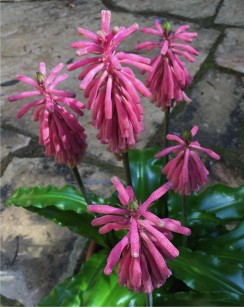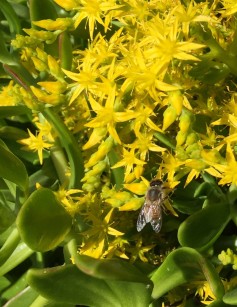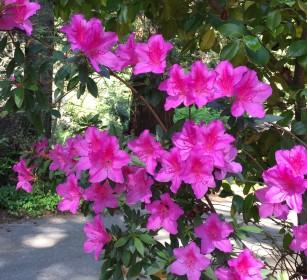Outside my window, the Forest Pansy redbud has started to display its spectacular orange fall color. There?s a suet feeder hanging from the branches so I get to enjoy the antics of the Pygmy Nuthatches, Purple Finches and the Chestnut-backed Chickadees all day long as I watch the changing colors of the foliage. Other than watch the birds and the changing foliage colors what should I be doing out there in the garden?
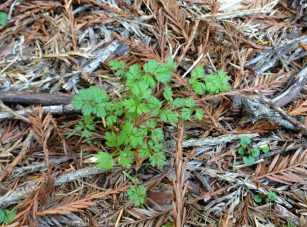
Light weeding is easy now that the soil is soft and moist. The dreaded hedge parsley has germinated early with our October rains. With it’s spiny-ball seeds that stick to your dog’s fur and your socks it is not welcome on my property.? It’s invasive and a native of Europe. They?ll be easy to pull now.
Maybe I will plant a few more bulbs. The ground is cooling and there?s still plenty of time for them to receive adequate winter chilling. Come spring I?ll be happy I did.
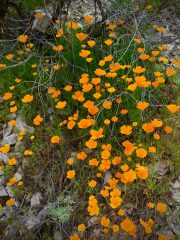
I just planted wildflower seeds on my hillside. I hoping for more California poppies. I see some of last year?s wildflowers have reseeded. Nature knows when the time is right. I spread the new seeds in swaths and worked them very lightly into the soil, first hoeing off some early weeds that would compete with them.
What not to do in the garden now? I don?t need to prune trees and shrubs at this time of year. Other than clipping a few well placed branches to use for holiday decorations, I?m off the hook for this task. Deciduous trees are still in the process of losing their leaves and are not fully dormant. Evergreen shrubs and conifers can be trimmed lightly but most shaping is done when they start growing in late winter or very early spring. Fall is not a good time to prune. Wounds heal slowly, leaving them more susceptible to disease. As a general rule, don’t prune when leaves are falling or forming. To avoid sap flow on birches and maples prune after leaves mature next year.
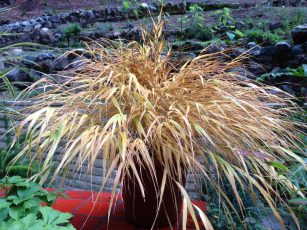
The growing season is pretty much over for me except to enjoy what?s left of fall color and the ornamental grasses waving their seed heads in the wind. A lot of perennials are dying back but I?m not in a hurry to neaten things up. The seed heads left in the garden supply food for birds and other creatures while the foliage provides shelter for the plant in the cold and frost. Remove anything that has turned slimy or just plain unattractive but leave berries and seed heads for food and winter interest.
At this time of year my garden is visited also by Lesser goldfinches and warblers who will spend the winter and I?m doing them a big favor by not cutting back brown foliage containing nutrient-rich seed heads. Some of the reliable seed producers that I won?t have to clean up this weekend include artemisia, aster, coreopsis, penstemon, sedum, lupine, salvia, black-eye Susan, coneflower, phlomis, monarda, agapanthus and grasses.
Used to be the first frost in our area came about the first or second week of November but not anymore. Be prepared whenever it comes by moving frost tender plants under overhangs if possible or having frost blankets ready to cover frost tender plants.

